
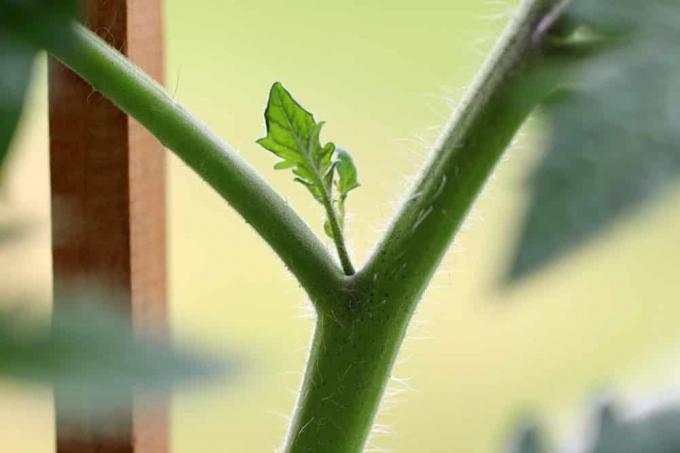
Table of contents
- What is maxing out?
- Benefits of squeezing
- There are downsides too
- The right time
- differentiation of shoots
- Cancel or cut?
- Exploit step by step
- Don't feel like splurging?
The tomato harvest is not always plentiful in our latitudes. Rain and brown rot often afflicted the plants. The rampant growth also consumes a lot of energy, which the fruit then lacks. But on the other hand, the so-called Ausgeizen should help. Those who regularly remove the power-sapping shoots will be rewarded with a better harvest. Is that correct? If so, is there anything else that needs to be taken into account?
What is maxing out?
As unfamiliar as the term may be for many, there is a simple measure behind the term ausgeizen: the removal of unwanted shoots from the tomato plant. Only special shoots are removed, which are referred to as stingy shoots. They do not bear fruit, but they rob the tomato plant of a lot of energy, which it can use to produce fruit. They are therefore broken off or cut off early and regularly.
Tip:
Larger stinging shoots can be used for further propagation. After they have formed roots in the water glass after about a week, they are planted out.
Benefits of squeezing
If a tomato plant is allowed to grow out of control, it will quickly become bushy. All that green consumes a lot of nutrients and energy. The dense growth also promotes diseases. Pinching solves both problems.
- more energy and nutrients are left for fruiting
- more tomatoes are formed
- Tomatoes grow larger and ripen faster
- the tomato plant grows slimmer
- takes up less space
- Shoots are more airy
- Tomato plants can dry better after rain
- Spread of fungal diseases is prevented
Tip:
The slender growth habit caused by the pinching is well suited for growing tomatoes in greenhouses, where the available space is usually scarce.
There are downsides too
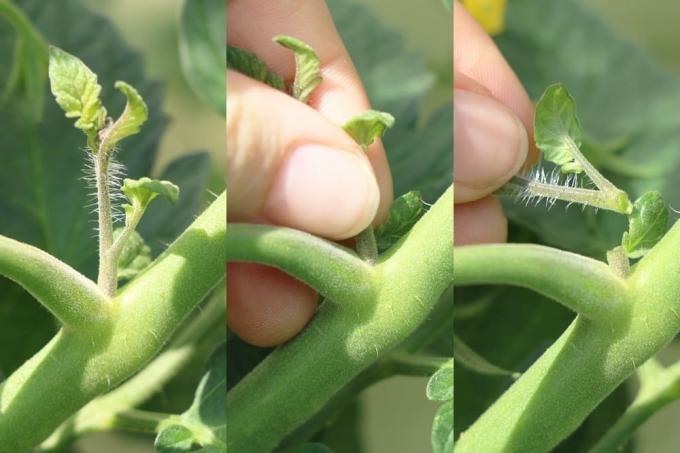
Being stingy doesn't just come with benefits. On the one hand, the natural growth of the tomato plant is changed. On the other hand, open wounds are caused by breaking off or cutting off the stinging shoots.
- slender growth is less stable
- Wind can snap the plant
- Binding is required
- pathogens can easily enter wounds
- the risk of disease increases
The high workload is also not to be neglected. Simply removing the shoots is not enough. Newly regrowing stingers require repeated intervention. For laypeople there is also the danger that fruit-bearing shoots will be removed by mistake instead of the stinging shoots.
The right time
When the tomato plant is planted in the bed, the first stinging shoots will soon sprout. The work of pinching out begins shortly after planting and is only over when the fruits are ready to be harvested.
- Period around June to September
- until harvest
- weekly or bi-weekly
- as long as the stinging shoots are a few centimeters small
- on a dry and warm day
- ideally in the morning
A notice:
A monthly time interval for pinching is not recommended, since the shoots can become quite large in the meantime. The consequences would be: high loss of strength for the plants and larger wounds after pinching.
differentiation of shoots
The tomato plants not only form many exhausting stingy shoots, but also shoots that later bear fruit. The shoots must be clearly distinguished from each other so that the fruit-bearing shoots are not accidentally removed. This fear of removing sprouts is actually what keeps many tomato owners from stinging. The miserly shoots can be easily identified.
- Stingy shoots do not form on main shoots
- they sit in the leaf axils
- between main shoot and side shoot
- as long as they are small, they are easier to spot
- larger stinging shoots push the leaf axils apart
- this makes the distinction more difficult
Tip:
If you're eating your tomatoes for the first time, you don't want to make any mistakes. Therefore, ask another tomato grower who is familiar with pinching for support and guidance, so that only pinchers really consecrate.
Cancel or cut?
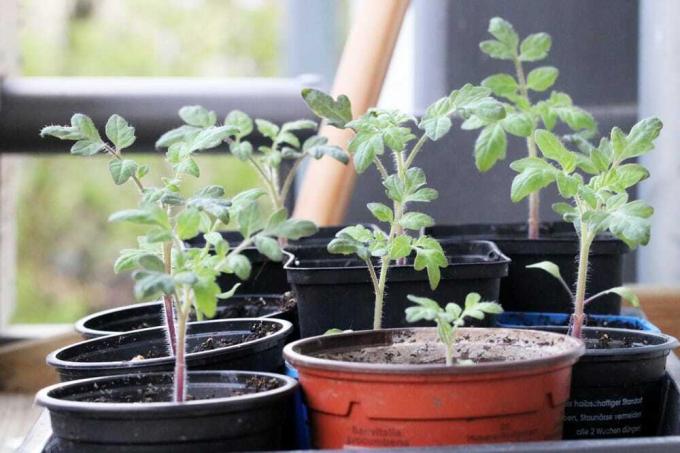
Break off stingy shoots by hand or rather cut them off cleanly with a pruning tool? There is no clear answer to this, as each method has its advantages and disadvantages. That's why every tomato grower has to find the right method for himself.
- Stingy shoots have a simple breaking point
- the small shoots in particular are easy to remove by hand
- with larger shoots there is a risk of unclean tearing
- Plant sap leaves stains on the skin
- Cutting tool ensures smooth cuts that heal well
- however, this method is more complex
- Blades can cause injuries to neighboring plant parts
- clipping can easily be too close or too far from the main shoot
Tip:
In any case, miserly instincts must not be simply torn. This means that other parts of the plant can easily tear off as well. The "tattered" demolition site can also heal poorly and thus increases the risk of illness.
Exploit step by step
Cutting tools are not absolutely necessary for cutting out the tomatoes. The young shoots can easily be removed by hand. A knife might only be needed if the shoots are already stronger.
- Wait for the right weather. In order for the open areas to heal well, you should pinch out on a dry and warm day.
- Do the pinching in the morning because the wounds can dry faster during the day.
- Check each drive to see if it really is a stingy drive. Proceed systematically from top to bottom.
- Take small and soft saplings up to about 5 cm long between your thumb and forefinger. Use your thumbnail to pinch it close to the leaf axil.
- Break off larger shoots, also close to the leaf axil. A knife can also be used for shoots that are too large.
- Leave the lowest stingy shoots. They give the tomato plant more stability.
- Dab the open areas with a cloth, this will speed up the healing of the wounds.
A notice:
While stick tomatoes benefit from pinching, removing the shoots from bush tomatoes can do more damage. All healthy shoots should definitely remain on the plant. Slightly windy days are also good for squeezing, as the wind "blows" the moisture away from the plants, allowing the wounds to dry quickly.
Don't feel like splurging?

The regular and time-consuming exhaustion can sometimes be annoying. Not everyone has the desire or time to do so. Something can be done in advance to ensure that the tomato plants bring the desired yield without being exhausted.
- cool and dark location causes bushy growth
- many miserliness are the result
- therefore choose an optimal location right from the start
- pay attention to a lot of heat and light
- the tomato plant grows tall
- the need for squeezing is reduced to a minimum.
 garden editorial
garden editorial I write about everything that interests me in my garden.
Learn more about tomatoes
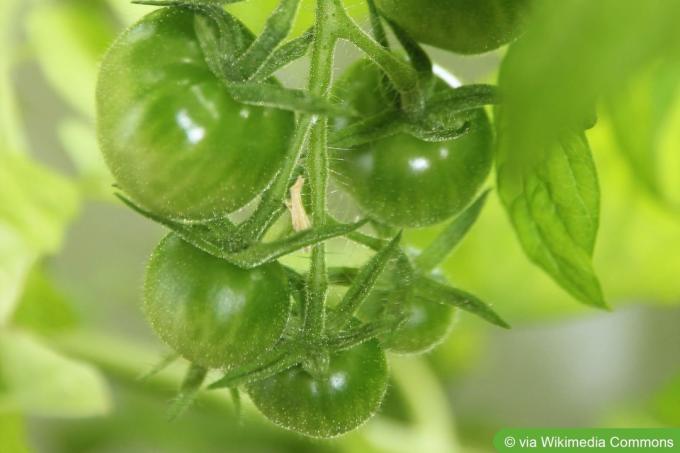
Mexican Honey Tomato: Taste & Cultivation
With the "Mexican honey tomato", hobby gardeners can bring a particularly sweet tomato variety into their garden. Due to its low acidity, it is one of the most popular sweet tomatoes and at the same time very easy to care for.
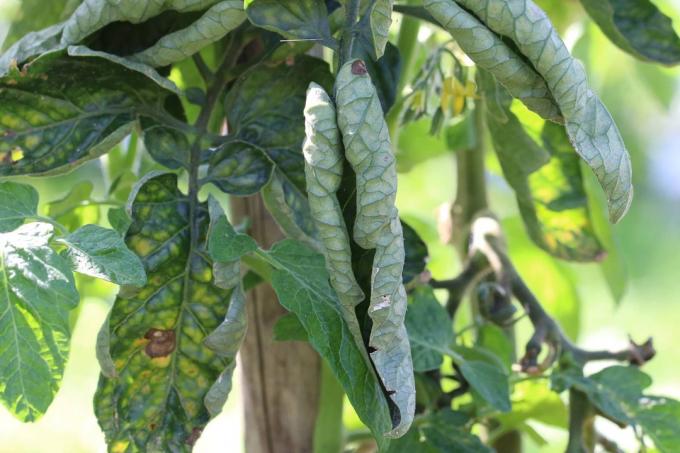
Tomato leaves curl: what to do?
There are many causes of curled leaves on tomato plants. Some are harmless, others can ruin crops. So waiting is not an option. Like a detective, you must search for clues. And then, if feasible, tailor-made countermeasures. Here's what to do when tomato leaves curl.
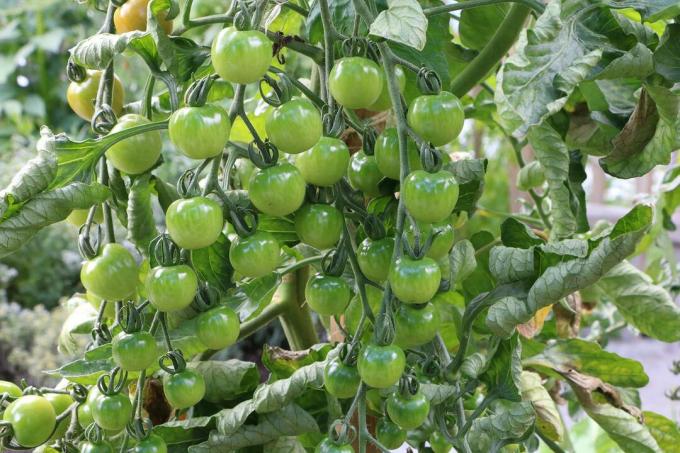
Fertilize tomatoes: how often, when and with what?
Tomatoes need a consistently high amount of nutrients for the development of flowers and fruits. In addition to choosing the right fertilizer, the amount and frequency also play an important role. All essential information for an optimal dosage can be found here.
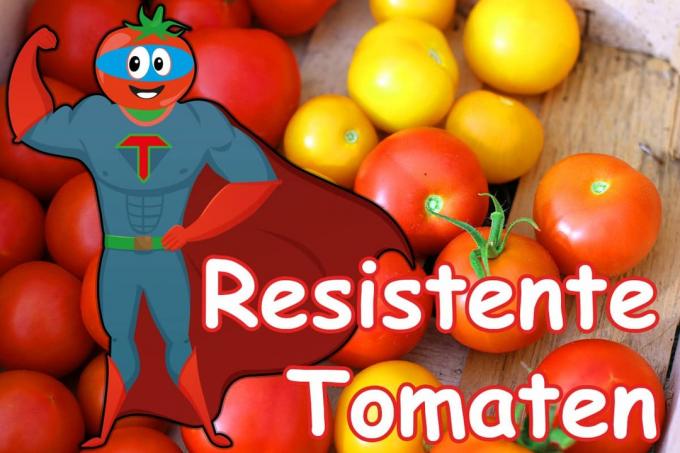
11 resistant tomato varieties defy rain and disease
Tomatoes are considered to be relatively easy to care for, but rain and numerous diseases can bother them. Fortunately, there are numerous tomato varieties that are resistant to many dreaded tomato diseases. We present the most popular specimens in this article.
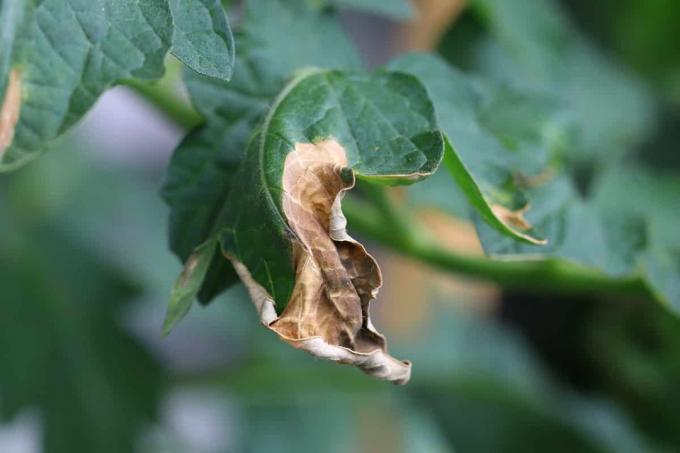
Control late blight and late blight in tomatoes
If pathogens of brown blight and late blight have settled on tomato plants, there is little hope of successful control. Home remedies and mechanical interventions only make sense in the early stages. It is all the more important that you prevent infections in a targeted manner through care measures.

How healthy are tomatoes? Information on calories, nutritional values & Co.
Snack healthy? The tomato makes it possible! Find out here why the red fruit should end up on the plate more often!

